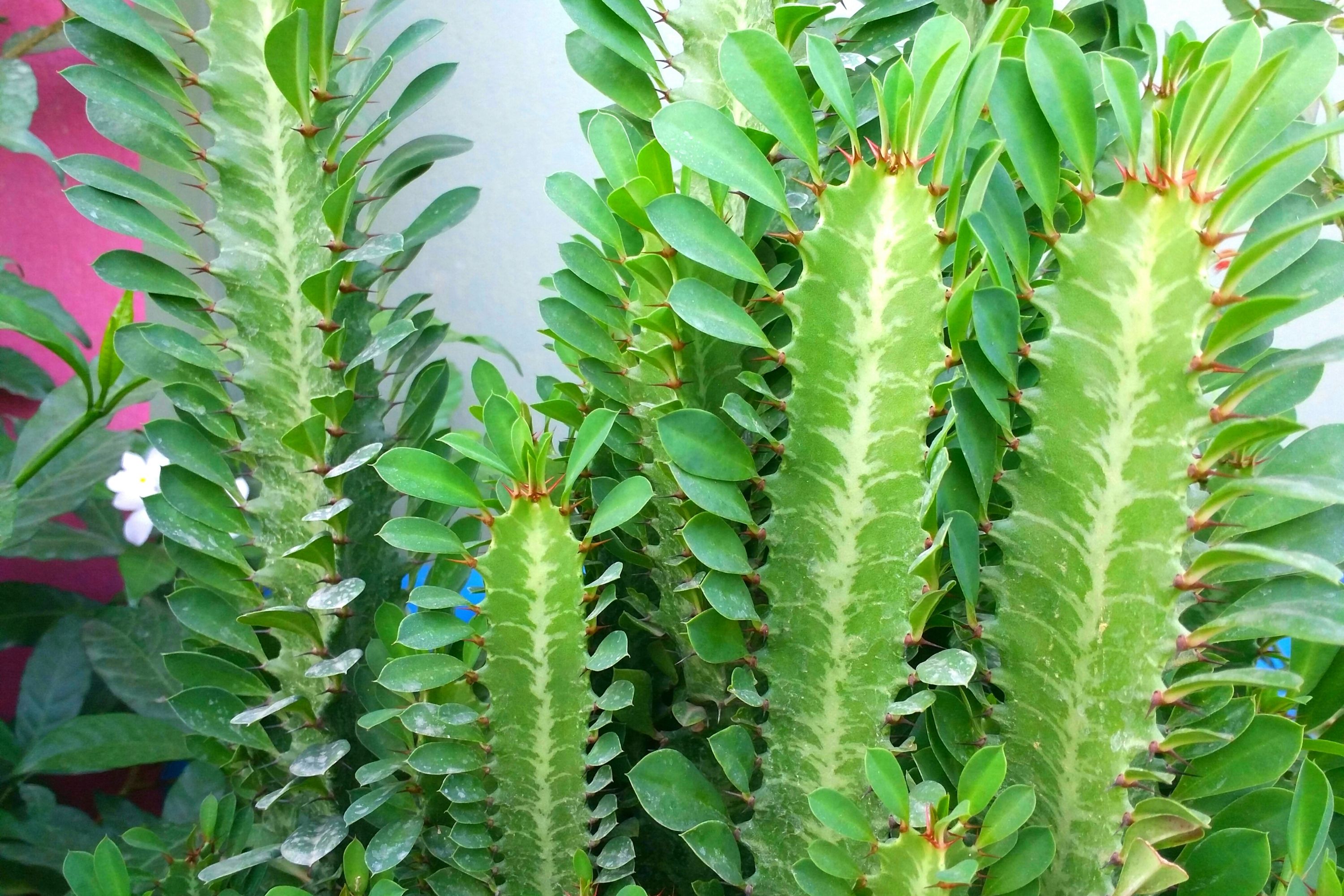African milk tree
(Euphorbia trigona)

Description
“Pet poisonous” – Toxic parts: leaves, stem, flowers Euphorbia trigona, also known as African milk tree or candelabra cactus, is a popular houseplant due to its unique and striking appearance. This succulent belongs to the Euphorbia family, which includes approximately 2,000 species of plants, many of which are prized for their ornamental value. Origin and Distribution Euphorbia trigona is native to tropical Africa, specifically Angola, Namibia, and South Africa. It is commonly found growing in dry, rocky regions and savannas, where it can reach heights of up to 10 feet (3 meters). Description Euphorbia trigona is a succulent shrub that typically grows to a height of 3-6 feet (1-2 meters) indoors. It has multiple stems that branch out from a single base, giving it a candelabra-like appearance. The stems are triangular in shape and have distinct ridges and edges, which are often marked with a light-green color. As the plant matures, the stems turn a reddish-brown color. The leaves of Euphorbia trigona are small and insignificant, with most of the photosynthesis occurring in the stems. The plant produces small, yellow-green flowers that bloom in late winter or early spring. These flowers are followed by small, rounded fruit capsules that contain the plant's seeds. Cultivation and Care Euphorbia trigona is a relatively easy plant to care for, making it a popular choice for beginner gardeners. The plant thrives in bright, indirect sunlight, but it can also tolerate partial shade. It prefers well-draining soil and should be watered only when the soil is completely dry. Overwatering can lead to root rot and other diseases. One unique characteristic of Euphorbia trigona is that it can produce a toxic, milky sap that can irritate the skin and eyes. It is important to wear gloves and protective eyewear when handling the plant, and to keep it out of reach of children and pets. Propagation Euphorbia trigona can be propagated through stem cuttings. To do this, simply cut off a healthy stem from the plant and allow the cut end to dry for a few days. Once the cut end has formed a callus, it can be planted in well-draining soil and watered sparingly until new growth appears. Uses and Benefits Euphorbia trigona is primarily grown as an ornamental plant due to its striking appearance. Its unique shape and coloration make it a popular addition to succulent gardens and indoor plant collections. In addition, some cultures believe that the plant has medicinal properties and use it to treat a variety of ailments, such as fever and inflammation. Conclusion Euphorbia trigona is a fascinating succulent that is prized for its unique appearance and ease of care. While it can be toxic if ingested or handled improperly, it is generally safe to grow as a houseplant with proper precautions. Whether you are a seasoned gardener or a beginner, Euphorbia trigona is sure to add a touch of intrigue to your plant collection.
Taxonomic tree:







